So far we’ve looked at Quiz positions 1 through 10 from the quiz contest at last month’s Boston Open. In this post you can test yourself on positions 11 through 15.
Stay focused!
Problem 11: Black to play 6-5
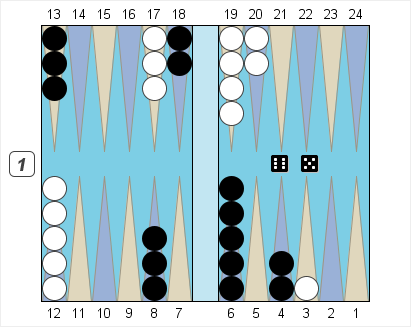
Black – Pips 137
Black to Play 6-5
Here’s an easy one.
When you’re in a holding position, the basic rule is to keep your spares moving from the back to the front. If you leave a spare on a rear point and then can’t move the spare safely later, you might have to give up an intermediate point that you’d rather keep.
In this position Black’s rearmost spare is the checker on his 13-point, so that’s the checker he wants to move if he can. The right play is just 13/2. Playing 8/2 6/1, on the other hand, leaves the 8-point stripped and might cause Black to have to abandon the point prematurely.
Problem 12: Black to play 6-2
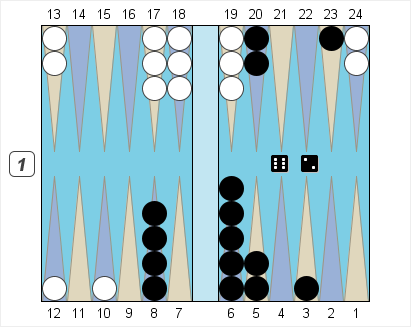
Black – Pips 138
Black to Play 6-2
Black trails by 21 pips before the roll. He can hit and get almost all the racing deficit back in one fell swoop, and that’s what he should do: 20/12* is the move.
While the play abandons the anchor and leaves plenty of blots around, the upside is too great to ignore. Black has the better board and lots of builders to improve it quickly, while White’s 4s, 5s, and 6s all play badly from the bar. Yes, a small double by White could be devastating, but that’s backgammon. White’s inner board is too weak for Black to play tight.
Problem 13: Black to play 6-1
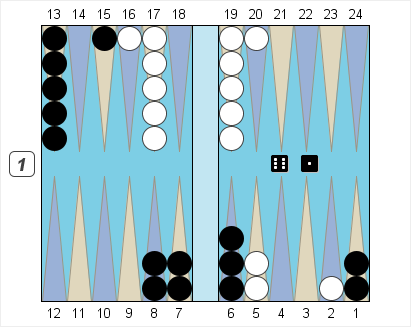
Black – Pips 130
Black to Play 6-1
When deciding on a safe play or a somewhat risky play, look at your opponent’s inner board first. That will usually give you most of the information you need.
Here Black already leads by 17 pips (130-147) and once he plays his 6-1 he’ll bump his lead up to 24. Moreover, he has a safe and reasonably constructive play available: the simple 15/8, putting a new builder in position.
But White’s inner board is very weak right now – no new points, a big stack on the 6-point (and the 8-point as well) and another loose blot on his 9-point. Clearly White won’t be enthusiastic about hitting some indirect shot that might be lying around next turn.
Does Black have a constructive play that only leaves indirect shots? Yes – he can play 13/7 13/12! He unstacks the big midpoint stack that might spell trouble down the road while leaving two indirect shots. (After that play, White should only hit with 5-5; hitting with any other number would be a blunder.)
Problem 14: Black to play 6-3
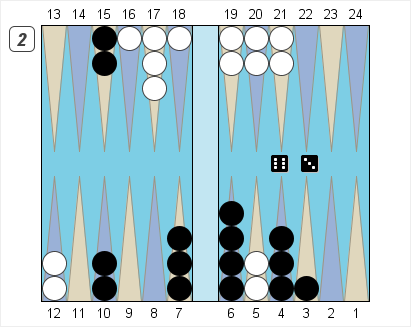
Black – Pips 110
Black to Play 6-3
Black and White are locked in a mutual holding game. Black will lead by 35 pips after he plays his roll, making him a solid favorite. Still, he has problems to solve. The 6-3 roll gives him a choice between making his 1-point (7/1 4/1) or clearing the 10-point (10/7 10/4). What’s right?
Many players would make their ace-point here, keeping the 10-point to maintain communication between the checkers on the 15-point and the home board. Here, however, the “communication” is an illusion. Black needs to throw doubles to clear the 15-point without leaving a shot, whether he owns the 10-point or not. It’s true that keeping the 10-point will give Black some numbers (fives) that let him clear the 15-point while leaving only a single shot. This advantage is balanced, however, by the need to clear the 10-point later.
The right idea here just clearing the 10-point with 10/7 10/4, abandoning the communication and buying as much time as possible to throw a set of doubles. After clearing the 10-point Black will have plenty of checkers to move while he waits for the set that brings him home.
Problem 15: Black to play 4-4
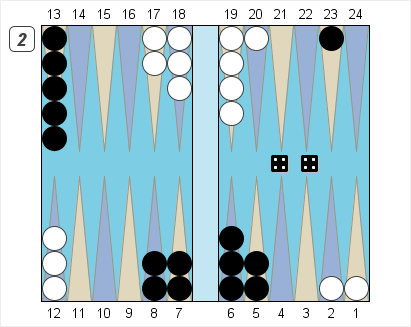
Black – Pips 146
Black to Play 4-4
Double-fours is a great shot but, like most doubles in the early part of the game, it’s easy to misplay.
Both 13/9(2) 13/5 or 13/9(2) 8/4(2) create very good structures. But Black can do better by focusing on the key element in the position — White’s blot on his 5-point. If White can cover that blot, he’s got a reasonable position. If Black can hit the blot, White’s toast. Since Black can’t hit this turn, he has to look at a tempo play that will keep White busy so Black has another shot next turn.
With that in mind, Black’s play becomes clear: 8/4(2), strengthening the board, 6/2*, the tempo hit, and finally 13/9, the best four available. White now needs ones, twos, and threes to enter and ones and twos to cover, so Black has some duplication working. Finally, if White dances the tempo hit could turn into a full-fledged blitz, and with the cube already turned gammons will be in the air.





